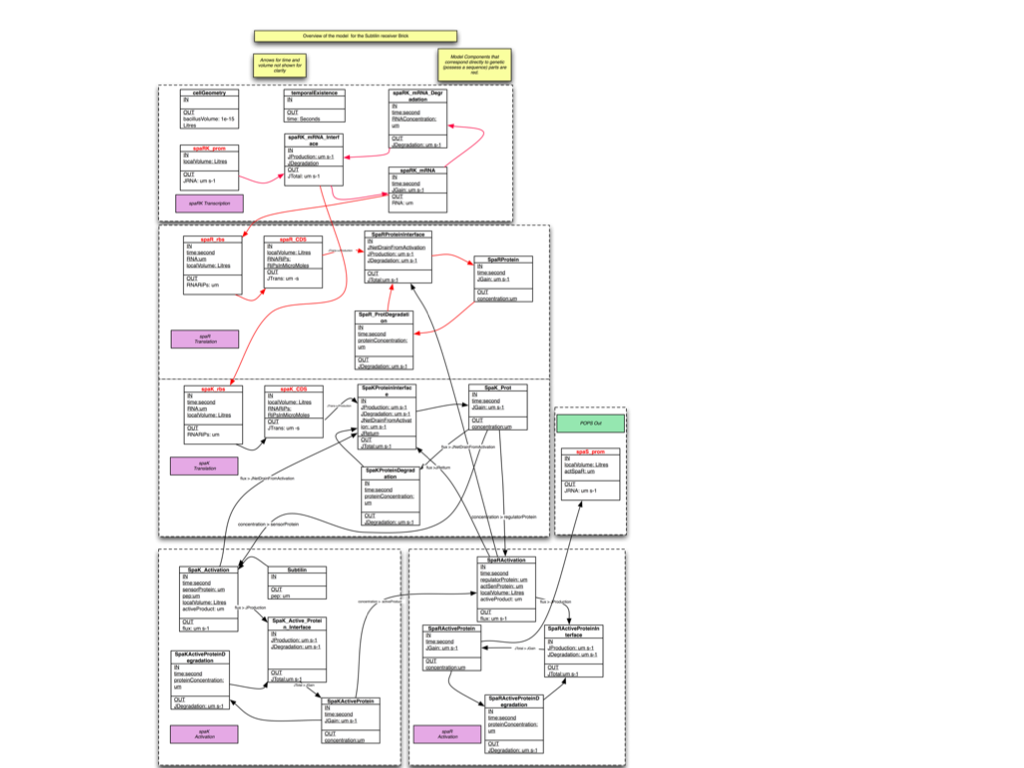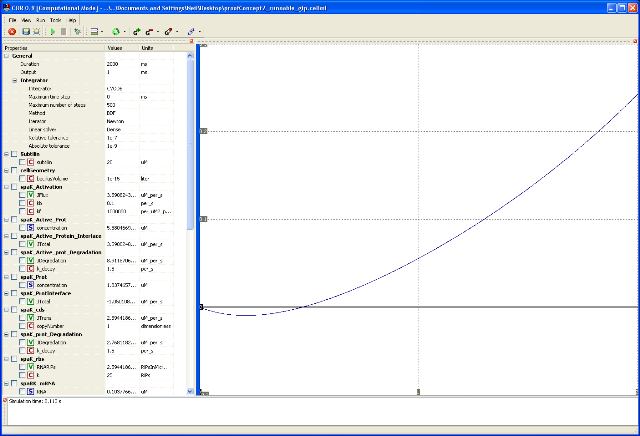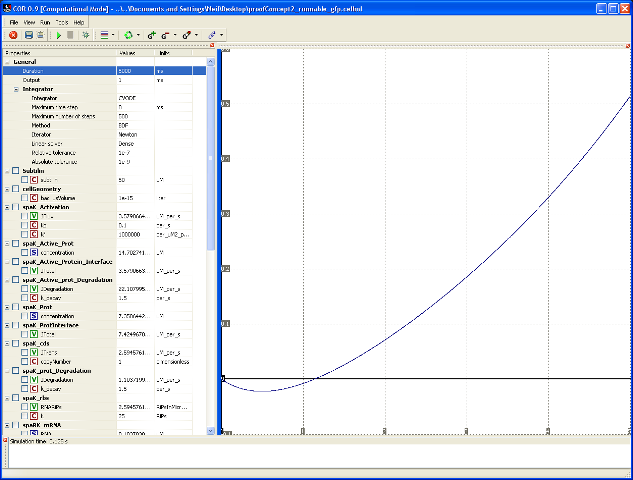Team:Newcastle University/Modelling
From 2008.igem.org
Newcastle University
GOLD MEDAL WINNER 2008
| Home | Team | Original Aims | Software | Modelling | Proof of Concept Brick | Wet Lab | Conclusions |
|---|
Home >> Modelling
Introduction to CellML
The programming language chosen for modelling was [http://www.cellml.org/ CellML]. CellML has been used extensively to model human physiology as part of the [http://www.physiome.org.nz/ Physiome] project, but is equally suitable for modelling biological pathways and the molecules involved in these. CellML models are based on a modular structure, which is appropriate when modelling the behaviour of biological parts. CellML seeks to model the mathematics behind biological systems. This is beneficial when capturing information but the implications are that the mathematics behind the behaviour must be clearly defined and understood.
CellML is good at describing biological entities in a modular fashion and can also express a wide range of different kinds of model. The modularity of CellML is important for this BugBuster project as it enables models of separate components to be built separately and then later be combined into a single, integrated model. This was used to explore possible genetic networks by combining models from the parts and constraints repositories.
CellML integrates the language MathML to describe the mathematical relationships between different components and variables within a biological model(Lloyd, et al., 2004). Every variable must have physically defined units. This makes the language more explicit and consistent, eliminates a large range of errors. The ultimate aim for the CellML language is for the research community to build models and make them freely available for others to build on(Lloyd, et al., 2004). We have used the CellML language in defining all of our part and constraint models.
Model generation and simulation
Modelling in the CellML language was carried out in the [http://cor.physiol.ox.ac.uk/ Cellular Open Resource (COR)] (Garny, et al., 2003). COR is a free resource available in Microsoft Windows. This provides an editor to write in COR language, which was more easy for human editing than the XML-based mark-up language. The text is converted into the CELLML XML format by the program, which complies and runs models as they are created. Once models were generated in COR, they were loaded into [http://www.cellml.org/tools/pcenv/ PCEnv] for simulation.
Modelling of our proof of concept subtilin quorum peptide receiver
Our subtilin receiver model was assembled from invidual virtual part models, together with the compartment
An overview of the CellML compartments and their interconnections for the subtilin receiver model.
Download a high resolution version of this image File:ProofOfConceptModelOverview.zip
Simulations of the subtilin receiver CellML model using COR:
Accumulation of activated (phosphorylated) SpaR in the presence of 20 um subtilin
Accumulation of activated (phosphorylated) SpaR in the presence of 50 um subtilin
Downloads
|
Contains the CellML models created as part of the Parts Repository. See Team:Newcastle University/Parts Repository for more information. | |
|
Contains the individual component text files, containing CellML, from the Parts Repository. See Team:Newcastle University/Parts Repository for more information. | |
|
Contains: The CellML model of the proof of concept BioBrick, subtilin receiver as shown above. See Proof of Concept Brick for more information. |
Further Reading
Garny, A. (2003) Cellular Open Resource(COR): A public CellML based environment for modelling biological function, International Journal of Bifurcation and Chaos, 13, 3579-3590.
Lloyd, C.M., Halstead, M.D.B. and Nielsen, P.F. (2004) CellML: its future, present and past, Progress in Biophysics & Molecular Biology, 85, 433-450. "
"




